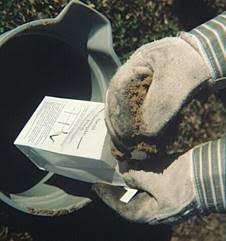By David Wall, Mount Pleasant Master Gardener
Many keep liquid fertilizers to feed individual plants around the patio. They act faster than solid fertilizers and give plants an immediate shot in the arm, so to speak. In fact, patio container grown plants do their best when they get frequent doses of liquid fertilizers, because nutrients are immediately distributed throughout the container. Liquid fertilizers work very well but have two negative aspects. First, they’re very short acting, necessitating more frequent feedings. Second, many mistakenly believe they’re far too expensive for gardens.
Soil nitrogen is difficult for plants to absorb until the soil temperature reaches 50 degrees. As such, early planted vegetables may start off very slowly. Liquid fertilizers negate this difficulty, by giving plants a shot in the arm until the soil warms up. It’s easy to overdo solid fertilizer, resulting in monstrous plants that produce very little, but since liquid fertilizers are so short acting, they don’t have this problem. Late in the season, liquid fertilizers can give tomato plants a much-needed shot to rejuvenate their fruit.
There are several free liquid fertilizers you can make, but most involve fresh manure and/or urine. An easy, free formula is to take an old pillow case and drop two shovelfuls of compost (not mulch) into it. Now, take a large garbage can with a lid and fill with water. Close off the pillow case, drop in the water and put on the lid. Let it steep 3-4 three to four days. Remove the bag, and you have a mild liquid fertilizer. If the liquid is very dark, dilute so that it changes to at least a medium brown color. Use a hand-held water can, and water your garden plants every 2-3 weeks. If the soil is dry, water to wet the soil first for better fertilizer penetration. Try it!!!






